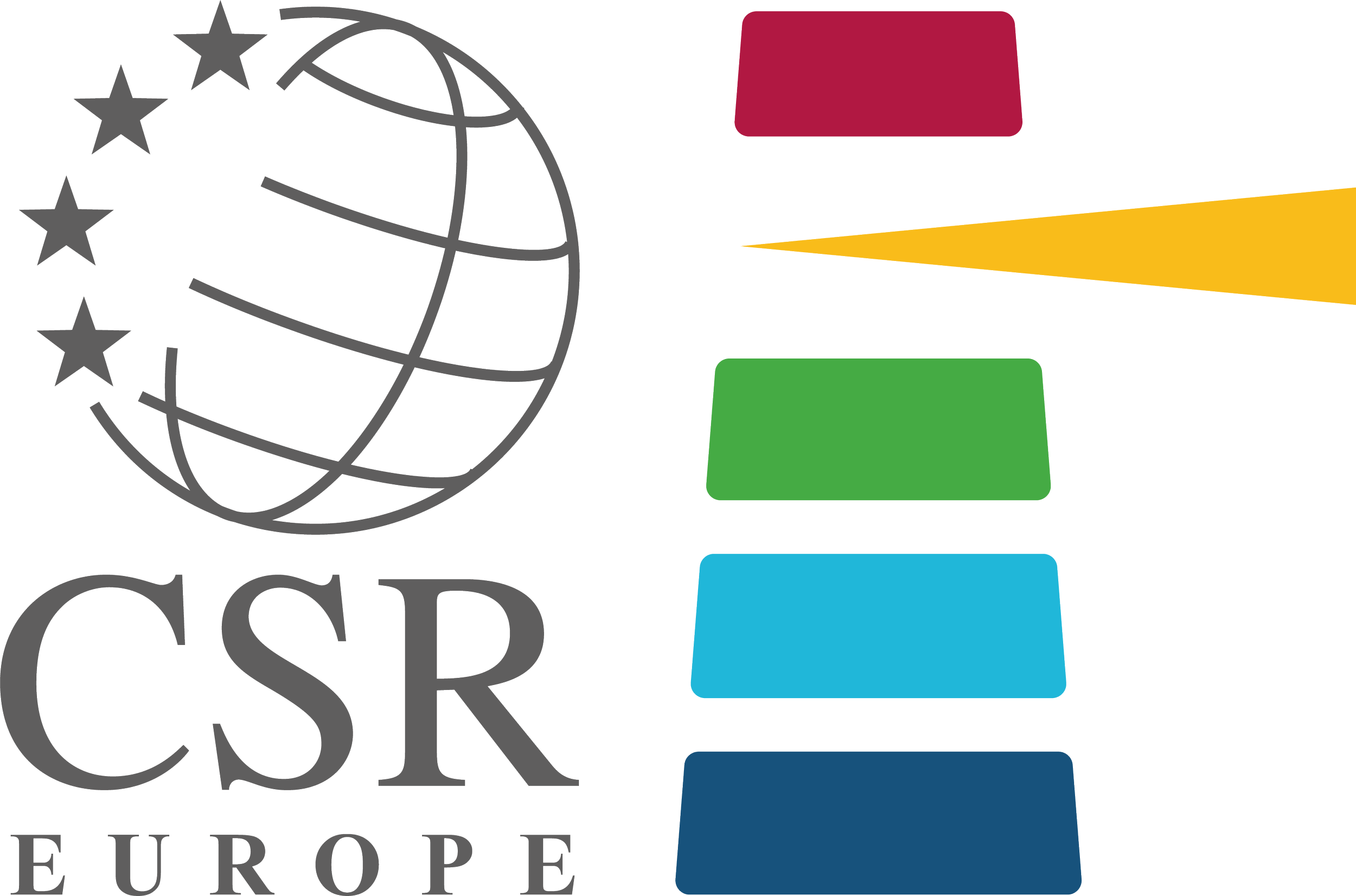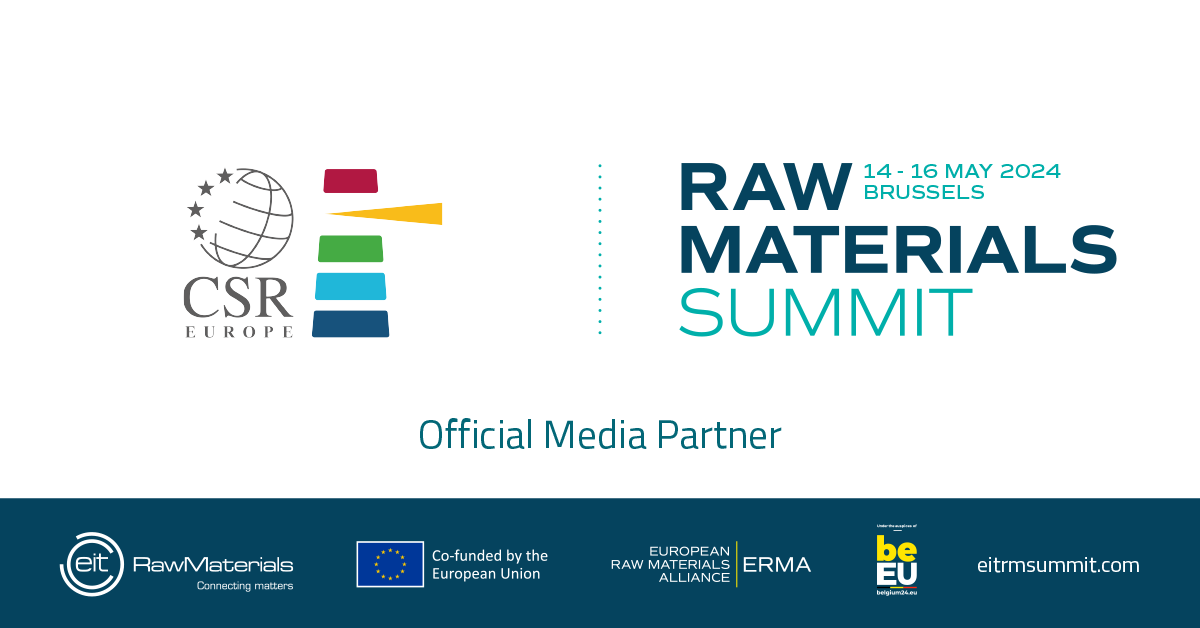Where Do We Start to Fight Climate Change?
The business contribution is core to Europe moving towards a sustainable future. However, sustainability is no longer about individual company’s management, but it is about the entire eco-system and is only possible if implemented through strengthening local communities.
This month, we talked with Henning Ohlsson, Managing Director at EPSON Deutschland GmbH, about concrete actions that can be taken to reduce global warming and contribute to the fulfillment of the Paris Agreement by 2030.
The interview is part of “The Sustainability Agenda Towards 2030” a new series of monthly interviews with CSR Europe’s Board Members to shed light on key CSR challenges and how leading companies are turning threats into opportunities.
The European Commission is putting in place a battery of new measures, from the Fit for 55 Package to the Taxonomy, to reach the objective of the Paris Agreement. How is Epson preparing for these new regulatory changes?
In 2008, Epson established Environmental Vision 2050, a statement of our environmental goals out to the year 2050. The world has since changed. Global efforts to achieve social sustainability are accelerating, with the United Nations adopting Sustainable Development Goals (SDGs) and the Paris Agreement in 2015, charting a course toward decarbonization. In light of these changes, Epson revised the environmental vision in 2018 and most recently in March 2021 to reflect our strong commitment to addressing major societal issues such as decarbonization and resource recycling. The Paris Agreement subsequently established decarbonization targets, and Epson created a scenario to achieve by FY2025 science-based targets (SBT) aimed at achieving these goals.
This scenario included plans and measures to expand the use of renewable electricity over the long term. Epson worldwide Group sites will all meet their electricity needs from 100% renewable energy sources by 2023. With the belief that climate change represents a serious corporate risk, Epson has established its policy to accelerate its plans to become a leading environmental company and play a greater role in mitigating that risk as it rolls out its business worldwide.
Last year, Epson received the CDP A list rating for tackling climate change. Could you tell us a bit more about Epson’s approach to fighting climate change? Did it change with the pandemic?
In March 2021, Epson announced a revised corporate vision, Epson 25 Renewed, and confirmed that our initiatives support the achievement of all 17 SDGs goals. Epson 25 Renewed describes the company’s aspirations for addressing societal issues and achieving sustainable and enriched communities by working with customers and partners. It also sets forth new mid-term targets. We will use our efficient, compact, and precision technologies in tandem with various initiatives to improve the environmental performance of our products and to reduce the environmental impacts of our business activities across the entire value chain. In addition, we aim to provide outstanding customer value in both economic and environmental aspects by offering products and services that enable our customers to create new business processes.
Our goals are:
To become carbon negative and underground resource free -non-renewable resources such as oils and metals - to achieve sustainability and enrich communities by 2050.
To reduce total emissions in line with the SBTi 1,5 degree C scenario by 2030.
To use in all Epson Group Sites 100% renewable electricity by 2023.
What is your company doing to reduce its carbon footprint in the supply chain?
Epson is proactively working to reduce the direct and indirect emissions associated with its business and production activities (scopes 1 and 2 emissions). However, it is indirect emissions that occur in the value chain (scope 3 emissions) that account for the vast majority of Epson’s GHG emissions. The lion’s share of scope 3 emissions are emissions during the use of our products (category 11: use of sold products) and emissions associated with the procurement of raw materials (category 1: purchased goods and services). Therefore, Epson has incorporated these two categories in its SBT (science-based target). As the company grows, emissions are expected to increase. Therefore, to ensure that these indicators are useful, we are focusing on reducing emissions as a percentage of business profit as we work to achieve growth and increase corporate value.
Epson is reducing GHG emissions by increasing the efficiency of the product, part, and waste transportation. We are making products smaller (which increases shipping efficiency), rethinking our logistics centers, innovating the loading and packing processes (to boost loading efficiency), and reconsidering shipment departure and arrival frequencies and number of trips.
Epson Europe chooses carriers with clear environmental programmes and CO2 emissions target reductions. We evaluate all suppliers - both direct materials suppliers and indirect materials suppliers - from multiple angles on the basis of a supplier evaluation program.
All suppliers are required to perform an annual self-assessment. They are asked questions in the categories of quality, cost, delivery, environment, and management systems. Among other things, the management system questions are designed to check the management of hazardous substances in products, the handling of personal data, and compliance with legal requirements concerning things such as international trade and bribery. Suppliers that receive a score of 60 points or less in the evaluation are considered to be high risk. Epson engages these suppliers to help resolve incidents of noncompliance. Suppliers that do not demonstrate improvement are excluded.
Prospective new suppliers are also required to complete the self-assessment. Transactions with those that receive a score of 70 points or less are permitted on the condition that corrective action is taken to remedy noncompliance.
How are your products contributing to reducing the carbon footprint of its customers? What are the steps you take to design and develop environmentally-conscious products?
While the pandemic has accelerated a societal shift in the way we live and work, new opportunities are emerging for Epson’s sustainable technologies in printing, manufacturing, visual communications, and lifestyle.
In printing, our unique PrecisionCore micro piezo inkjet technology is playing a huge role in reducing business environmental impact. Our heat-free printhead technology reduces energy consumption by more than 80% compared to laser printers, requires fewer consumables, is less wasteful, and is much simpler to maintain. If all European businesses switched to Epson inkjet technology, we could save 1 billion kWh a year, equivalent to a €151 million energy-saving and, more significantly, reduce carbon impact by over 410 thousand tonnes of CO2. This same volume would require 18 million trees a year to absorb.
This year in Europe we are proud to announce the first sale of PaperLab, the world’s only in-office secure paper recycler that closes the resource loop by turning waste paper into new paper using virtually no water.
While the workplace re-organizes itself into more virtual hubs and governments look to improve education for remote communities, the need for effective visual communications is accelerating. Our ultra-short-throw projectors are improving accessibility in the classroom while our visualisers support new virtual teaching methods. Epson projectors are designed to reduce power consumption and extend lamp life. The Light Optimizer function automatically adjusts lamp brightness based on the projected image, so power consumption is reduced as much as 27% when projecting dark images and eco mode can reduce power consumption by as much as 29%.
Other areas of our business such as manufacturing solutions are also emerging as sustainable choices. As economies across Europe build their recoveries, increased use of localised automation is resulting in less dependency on carbon-heavy offshore production. Robots are meeting the requirement for safe, socially distanced production, while at the same time allowing people to concentrate on more creative work.
The pandemic has also accelerated new and more sustainable uses for our technology. Our Moverio augmented reality smart glasses are solving the challenge of conducting business in a virtual workplace with companies across Europe using Moverio glasses for remote technical assistance, significantly reducing the need for long distance travel and face-to-face contact.
Looking ahead, Epson is committed to developing technologies and initiatives that help customers achieve their goals and reduce carbon impact. These environmental initiatives are defined by four categories:
Decarbonization: Focus on renewable electricity use and invest in energy-saving facilities to reduce greenhouse gas. Engage with suppliers to further this initiative and promote carbon-free logistics.
Close Resources Loop: Improve effective use of resources by reducing size and weight and using recycled materials along with minimizing production losses and extending product service lives through refurbishing and reuse.
Customer Environmental Impact Mitigation: Product products with lower footprint and extended lifecycles with lower power consumption and fewer consumable parts.
Environmental Technology Development: Invest in dry fiber technology applications and naturally derived (plastic-free) materials.
Epson is well placed for all these new challenges. Sustainability is in our DNA. Our Japanese roots are embedded in a strong tradition of making exceptional products from finite resources. Almost 80,000 employees worldwide share our commitment to sustainability. There is always a limit to what one company can do and it will take close collaboration and partnership with like-minded companies and people who share our vision to achieve more sustainability, enrich communities and improve the quality of our lives.
In two month’s time, world leaders will come together for the United Nations Climate Change Conference (COP26) in Glasgow on the 1st -12th of November. What outcomes would you like to see from COP26?
Many companies, organisations and governments across the world have made strong commitments to prevent the climate disaster that awaits us. In 2016, with guidance from the UN’s Intergovernmental Panel on Climate Change (IPCC), we signed the Paris Accord to keep global warming within the 1.5 degrees scenario, a target we now know is unlikely to be met.
Five years later and we still hesitate to take the actions that will make a real difference. The perceived cost of making the right changes has become a barrier to us making the sacrifices needed in the short term. And as we come to COP26 in Glasgow and beyond, we must not only agree but also act on a plan that will make a real difference and which will exponentially reduce the heat on all our activities.
The climate crisis cannot be left to the next generation. As we move to examine every part of our operations to reduce environmental impact, more long-term commitment, investment and action are needed. No one can do this alone. Working together with a common purpose is key to creating a more sustainable future.
The reconstruction of European economies following the pandemic has created a once-in-a-lifetime opportunity to build a better society. Just as the pandemic has accelerated the process of digital transformation and is changing the way we live and work, we now have an important chance to work together in partnership to deliver the sustainable technologies needed to underpin our long-term future.
Talk is free but action costs. The question we need to address is whether we are willing to meet the cost now and take necessary action or is climate disaster the price we and our future generations must pay for not acting sooner.
For more information:
THE SUSTAINABILITY AGENDA TOWARDS 2030
UPCOMING EVENTS





















